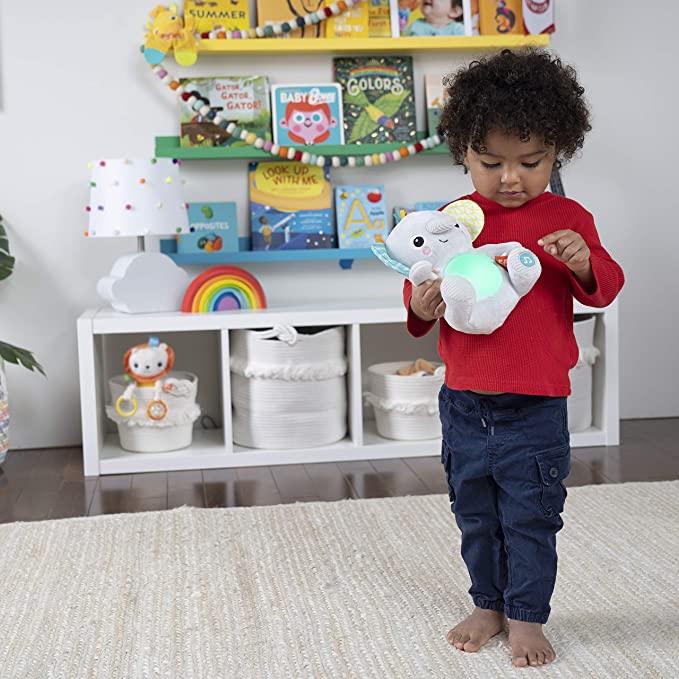Baby Oil vs. Vaseline: Which is Best for Your Baby's Skin?
As parents, we always want what's best for our little ones, especially when it comes to their delicate skin. When it comes to moisturizing and protecting your baby's skin, two common choices are baby oil and Vaseline. But which one should you use, and for what purposes? In this comprehensive guide, we'll dive deep into the world of baby skincare and help you make an informed decision about whether baby oil or Vaseline is better for your baby's skin.
Table of Contents
| Sr# | Headings |
|---|---|
| 1 | Introduction: The Importance of Baby Skincare |
| 2 | 1. Understanding Baby Oil |
| 3 | 2. Decoding the Benefits of Vaseline |
| 4 | 3. Baby Oil vs. Vaseline: Which One for What? |
| 5 | 4. Baby Massage: The Role of Baby Oil |
| 6 | 5. Nappy Rash Prevention: Vaseline's Strength |
| 7 | 6. Cradle Cap Conundrum: Baby Oil as a Solution |
| 8 | 7. Eczema and Sensitive Skin: A Battle of Choices |
| 9 | 8. Allergies and Reactions: Making a Safe Choice |
| 10 | 9. The Importance of Patch Testing |
| 11 | 10. Conclusion: The Right Choice for Your Baby |
| 12 | FAQs: Addressing Common Concerns |
Introduction: The Importance of Baby Skincare
Your baby's skin is incredibly sensitive and requires special care and attention. From preventing dryness to addressing common skin issues, choosing the right products can significantly impact your baby's comfort and health.
1. Understanding Baby Oil
Unveiling the basics:
-
Baby Oil Composition: Baby oil is typically mineral oil or a blend of mineral oil and natural oils. It is known for its ability to lock in moisture.
-
Benefits of Baby Oil: Baby oil helps in maintaining skin hydration and can be used for baby massage, dry skin relief, and cradle cap treatment.
2. Decoding the Benefits of Vaseline
The versatile petroleum jelly:
-
Vaseline Composition: Vaseline, also known as petroleum jelly, is a semi-solid mixture of hydrocarbons. It forms a protective barrier on the skin's surface.
-
Benefits of Vaseline: Vaseline is exceptional at locking in moisture, making it a go-to choice for preventing nappy rash, chapped lips, and dry skin.
3. Baby Oil vs. Vaseline: Which One for What?
Matching products to purposes:
-
Hydration: Baby oil and Vaseline are both effective at keeping the skin hydrated, but they excel in different scenarios.
-
Locking in Moisture: Vaseline is superior when it comes to creating a barrier that prevents moisture loss.
4. Baby Massage: The Role of Baby Oil
The loving touch:
-
Benefits of Baby Massage: Baby oil is commonly used for baby massage, providing a bonding experience for parents and soothing benefits for the baby's skin.
-
Choosing the Right Baby Oil: Opt for hypoallergenic and fragrance-free baby oil to reduce the risk of skin irritations.
5. Nappy Rash Prevention: Vaseline's Strength
Shielding from irritation:
-
Nappy Rash Causes: Vaseline's protective barrier can help prevent nappy rash by reducing friction and moisture.
-
Using Vaseline for Nappy Rash: Applying a thin layer of Vaseline during diaper changes can be a game-changer in nappy rash prevention.
6. Cradle Cap Conundrum: Baby Oil as a Solution
Tackling flaky scalp:
-
Understanding Cradle Cap: Baby oil's gentle properties make it an effective choice for softening and removing cradle cap scales.
-
Application Tips: Apply baby oil to the affected area, leave it for a short time, and then gently comb out the loosened scales.
7. Eczema and Sensitive Skin: A Battle of Choices
Addressing skin conditions:
- Eczema Management: If your baby has eczema or sensitive skin, consult a pediatrician before using any products. In some cases, baby oil or Vaseline may be recommended.
8. Allergies and Reactions: Making a Safe Choice
Prioritizing safety:
- Patch Testing: Always perform a patch test before introducing a new product to your baby's skin, especially if they have sensitive skin or a history of allergies.
9. The Importance of Patch Testing
A precautionary step:
- Patch Testing Process: Apply a small amount of the product on a small patch of your baby's skin and observe for any adverse reactions for at least 24 hours.
10. Conclusion: The Right Choice for Your Baby
In the baby oil vs. Vaseline debate, there isn't a one-size-fits-all answer. The choice depends on your baby's specific needs and skin conditions. Both products have their unique strengths, and when used correctly, they can contribute to your baby's skincare routine.
FAQs: Addressing Common Concerns
Q1: Can I use baby oil or Vaseline on my newborn?
A1: While both baby oil and Vaseline can be used on newborns, it's crucial to choose products that are specifically formulated for infants and perform a patch test to ensure your baby doesn't have any adverse reactions.
Q2: Can Vaseline be used as a moisturizer for babies?
A2: Yes, Vaseline can be used as a moisturizer to lock in moisture and prevent dry skin. However, be cautious about using it on the face, as it can clog pores.
Q3: Is it safe to use scented baby oil?
A3: It's best to avoid scented baby oil, especially if your baby has sensitive skin or a history of allergies. Fragrance-free options are safer choices.
Q4: Can I use baby oil or Vaseline on my baby's face?
A4: It's generally recommended to use baby oil sparingly on the face and avoid the eye area. Vaseline can be used on the face but should also be applied sparingly.
Q5: Can baby oil or Vaseline treat diaper rash?
A5: While both products can help prevent diaper rash by creating a protective barrier, they may not be sufficient for treating an existing rash. Consult your pediatrician for appropriate treatment options.
In the baby oil vs. Vaseline dilemma, remember that your baby's comfort and safety are paramount. Always consult with a healthcare professional for personalized advice on your baby's skincare needs.
Image by Freepik








